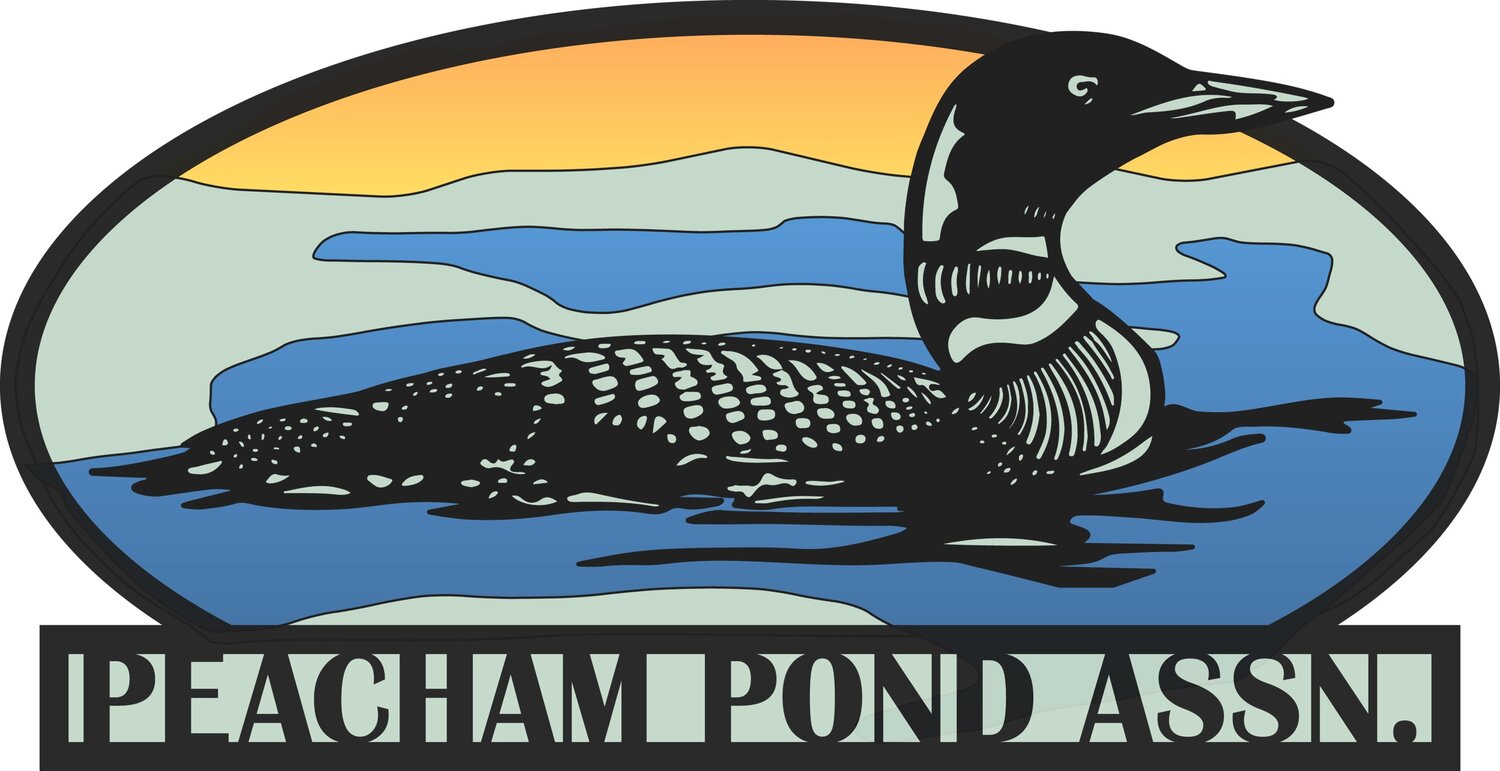
our oldest neighbors
Common Loons on Peacham Pond
The deepest part of Peacham Pond was formed by a retreating glacier about 12,000 years ago. It is quite possible that the Pond’s “first settlers” were loons. They have persisted to today with scant evolutionary change. The hoots and yodels we hear now are sounds from pre-historic New England.
Loons are unlike modern birds. They can barely maneuver on land. They stay in the water their entire lives except when incubating their eggs. Their nests are not much more than loon-sized bowls in the shoreline dirt, only a few inches above the water level. Survival of those eggs to become the cute, fuzzy chicks we enjoy seeing each summer is dependent on that water not flooding the nest from mid-May through early July.
Loon survival is thus fragile. As lake usage increased they became an endangered species in Vermont. In the last 30+ years the Vermont Loon Recovery Project has slowly rebuilt their numbers to almost 100 nesting pairs in the State. The island in the north arm of Peacham Pond was something of a hero in this effort. For two decades the nesting pair there hatched chicks almost every year.
Unfortunately, since about 2015 the number of loons and loon chicks hatching on Peacham Pond has substantially declined. The State loon biologist is not sure of the cause. It could be altered water chemistry, increased boat traffic, or something else entirely. We can help while still enjoying our lake activities. When nesting signs are out, take note and keep your distance - even in kayaks. The chicks leave the nest as soon as they hatch and the eggs are under the on-duty parent until then. Males and females share egg warming responsibilities. Avoid causing any boat wake that might flood a nest. The Vermont boating speed limit within 200’ of any shore is always 5 mph. Don’t play loud music, race motors, or yell near a loon nest. If a loon hollers at you at any time, back off immediately. Their perception of “private space” seems to be a bit larger the first few weeks the chicks are afloat. Do float quietly and use binoculars and longish camera lenses to enjoy our oldest neighbors.
Written by Rick Scholes 2021
To learn more about the Vermont Common Loon Conservation, please visit the Vermont Center for EcoStudies
2025 loon update
We had a newly formed group of Loon Watchers/Monitors working on the pond this summer. PPA board member, Chris Milne, gathered a group to participate in the State of Vermont Loon Count Day. Using a pontoon boat, kayaks and walkie-talkies, the team counted loons on Saturday, July 19th. They reported 14 adults and one chick. More help is always welcomed to complete all the necessary work of protecting the loons. If you would like to help with loon nesting signs or report on nesting loons or chicks during the summer, please reach out to: chris.milne@childtrust.com
